For small and mid-sized businesses (SMBs), staying competitive in a rapidly evolving landscape can feel like a high-stakes game. But the rise of AI-driven insights is leveling the playing field, empowering even lean teams to make smarter, faster decisions. With the right tools, SMBs can harness the power of artificial intelligence to identify growth opportunities, forecast trends, and streamline daily operations.
This isn’t about replacing human judgment—it’s about amplifying it. AI-powered insights take the guesswork out of decision-making by detecting patterns and anomalies in real-time. Whether you’re building a marketing strategy, planning inventory, or analyzing customer behavior, AI provides the data-driven clarity needed to move forward with confidence.
Why AI-Driven Insights Matter for Small Businesses
Historically, advanced analytics were reserved for large enterprises with deep pockets and full-time data science teams. But that’s changing fast. Thanks to cloud platforms and integrated AI tools for data analysis, SMBs now have access to powerful insights that were once out of reach. These tools automate complex analysis, surface trends, and offer recommendations, often in plain language.
From budget forecasting to customer segmentation, artificial intelligence for small business enables a level of precision that manual spreadsheets and gut instinct can’t match. And with easy-to-use platforms, you don’t need a technical background to make the most of it. That means fewer hours crunching numbers and more time making moves that drive growth.
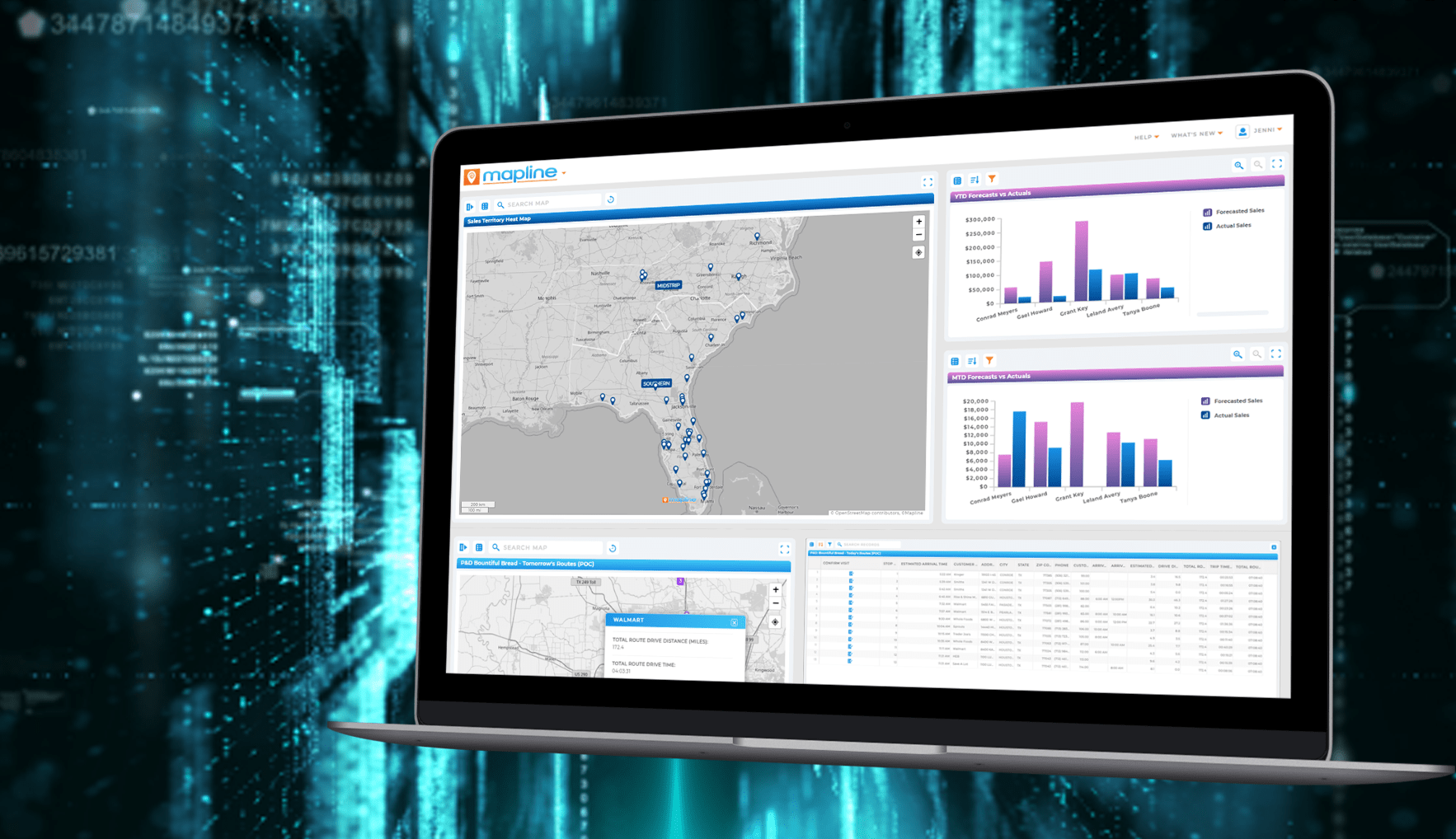

Pro Tip: Want to see how AI and mapping come together? Use Mapline’s AI-powered business intelligence features to visualize trends, align teams, and unlock actionable insights from your business data.
Common Business Problems Solved by AI Analytics
Modern SMBs face many of the same data challenges as larger companies—just with fewer people and tighter budgets. AI helps bridge that gap by processing high volumes of data instantly and highlighting only the most important takeaways. These actionable insights can dramatically improve decision speed and accuracy across teams.
Here are some of the most impactful ways businesses are using AI driven insights to overcome common obstacles and gain an edge.
Identifying Market Trends and Customer Behavior
Mapline gives teams a clear view of emerging trends by visualizing sales activity, customer distribution, and demographic data across territories. With map-based filters and machine learning–powered analysis, businesses can uncover geographic patterns, such as where certain products are gaining traction or which regions show signs of slowing engagement.
These insights allow teams to make proactive, data-informed decisions that align with real-world customer behavior.

Enhancing Forecasting and Planning
From inventory planning to territory projections, tools like Mapline help businesses generate accurate forecasts using historical trends, regional data, and machine learning–backed calculations.
By layering spatial insights with performance metrics, teams can anticipate demand shifts, plan more effectively, and avoid costly missteps like overstock or undersupply. This level of proactive planning reduces operational risk and positions businesses to respond quickly to market changes.
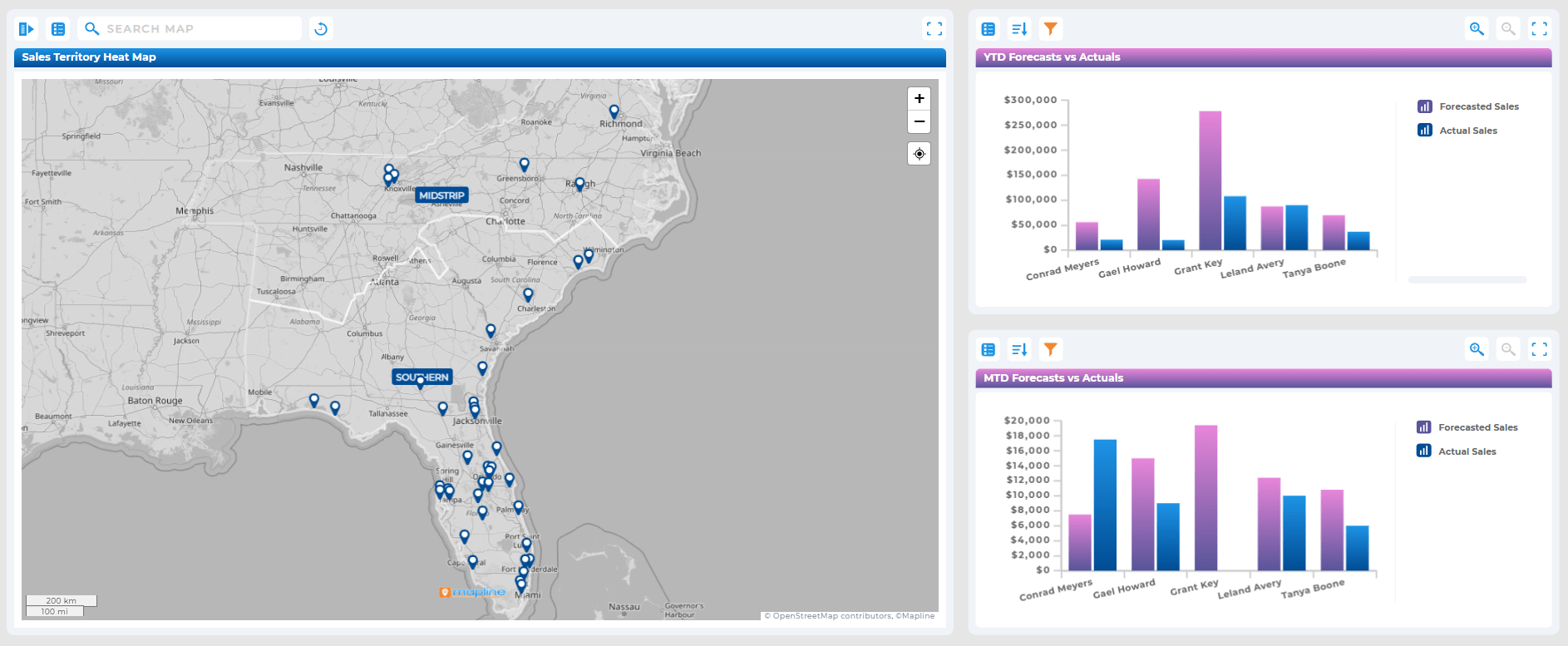
Streamlining Marketing Campaigns
Mapline helps marketers make smarter decisions by visualizing campaign performance across regions and customer segments. With location intelligence and machine learning–driven insights, teams can identify where engagement is highest, which areas are underperforming, and where to focus future efforts. This allows for more targeted outreach, better audience segmentation, and smarter use of ad spend, all without the guesswork. By mapping campaign data, marketers gain the clarity they need to optimize performance and scale success.
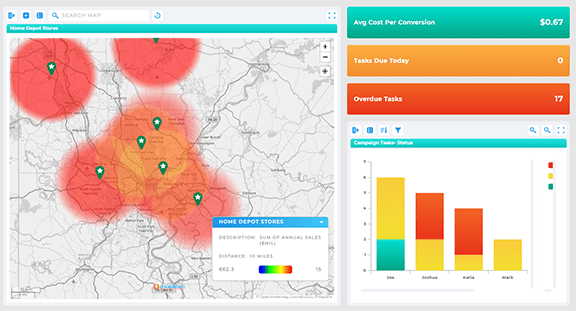
Making AI Accessible for Business Leaders
One of the biggest misconceptions about AI driven insights for companies is that it’s too complex or technical for non-technical leaders. But modern business intelligence tools are built for usability, not just data science. Platforms like Mapline and Power BI prioritize clarity, offering intuitive dashboards, smart visualizations, and machine learning–powered insights that help decision-makers act fast.
For business leaders, this means fewer spreadsheets and more strategic guidance. Instead of static tables, you get dynamic maps, clear trends, and predictive modeling that points to your next best move. The result is less time interpreting data, and more time executing on what matters.
AI-Powered Dashboards and Visualizations
With AI analytics tools like Mapline, you can visualize sales territories, customer segments, or performance data with just a few clicks. Layering AI driven insights on top of spatial data reveals new growth opportunities and risk zones in real-time, making it easy to adjust plans on the fly.
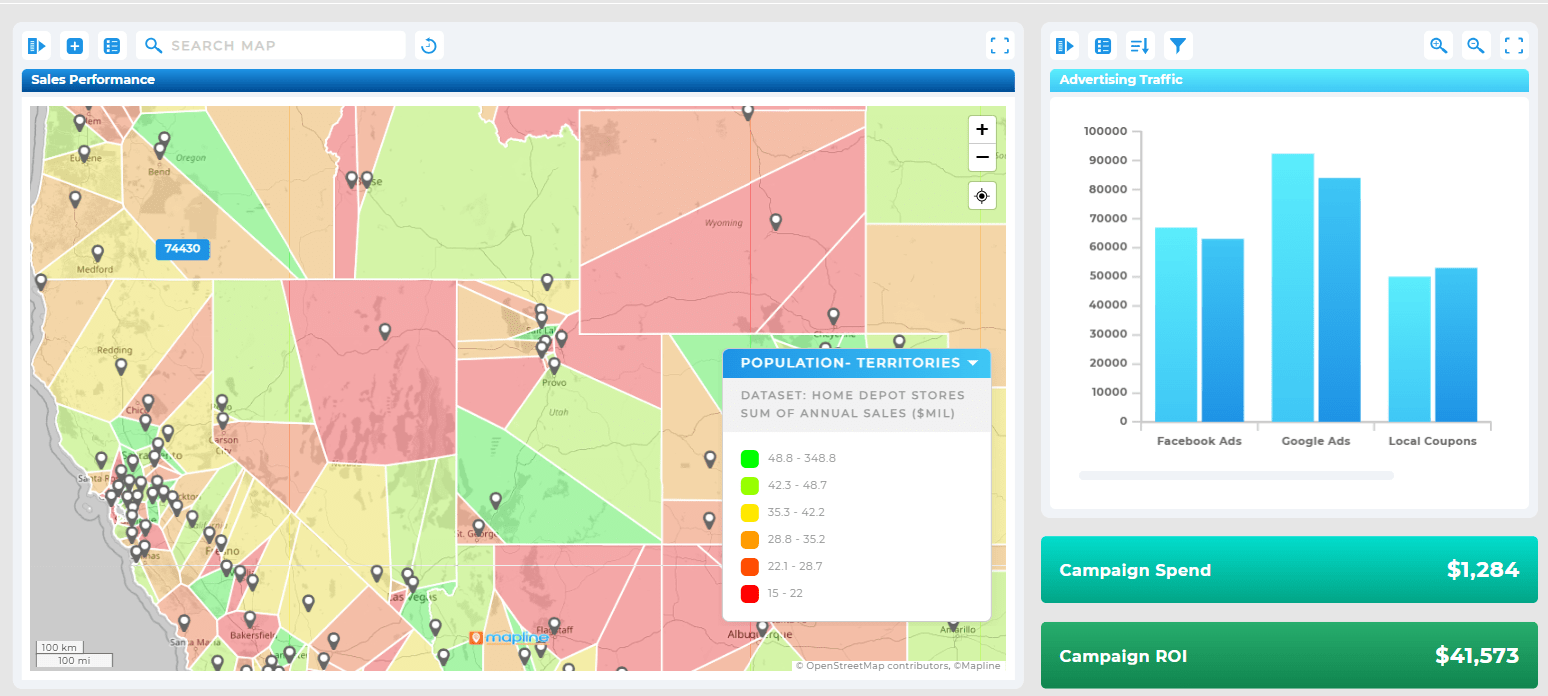
AI-Assisted Decision Support
Instead of wading through spreadsheets, business leaders can rely on AI-powered tools to surface the most relevant data and visualizations. With intelligent dashboards and predictive modeling, it’s easy to identify underperforming territories, spot emerging trends, and guide next-step planning. This kind of automated insight turns AI and data analytics into a practical, everyday asset for decision-makers.
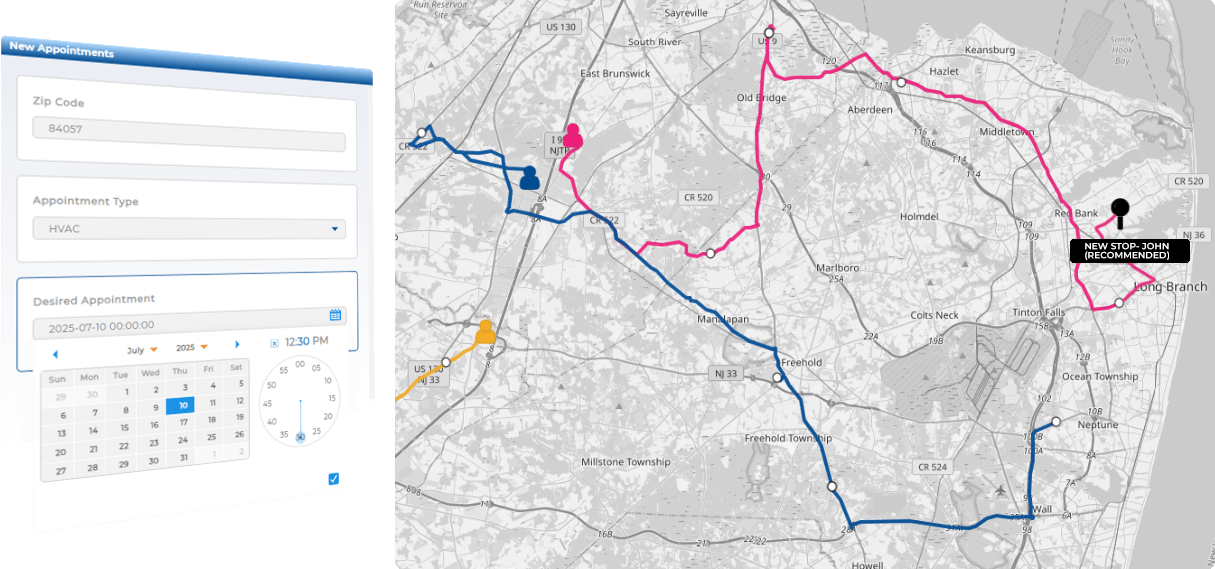
Integrating AI Driven Insights Into Existing Workflows
You don’t have to overhaul your business systems to use AI. Many AI business intelligence tools integrate with existing CRMs, ERPs, and cloud data platforms. Whether you’re using Excel, Salesforce, or another solution, AI can layer insights onto the tools you already rely on, making adoption fast and frictionless.
For example, teams building custom workflows can leverage Mapline’s API to connect with tools like ChatGPT for data analysis, enabling real-time extraction, analysis, and summarization of location-based data as part of a broader automation strategy.
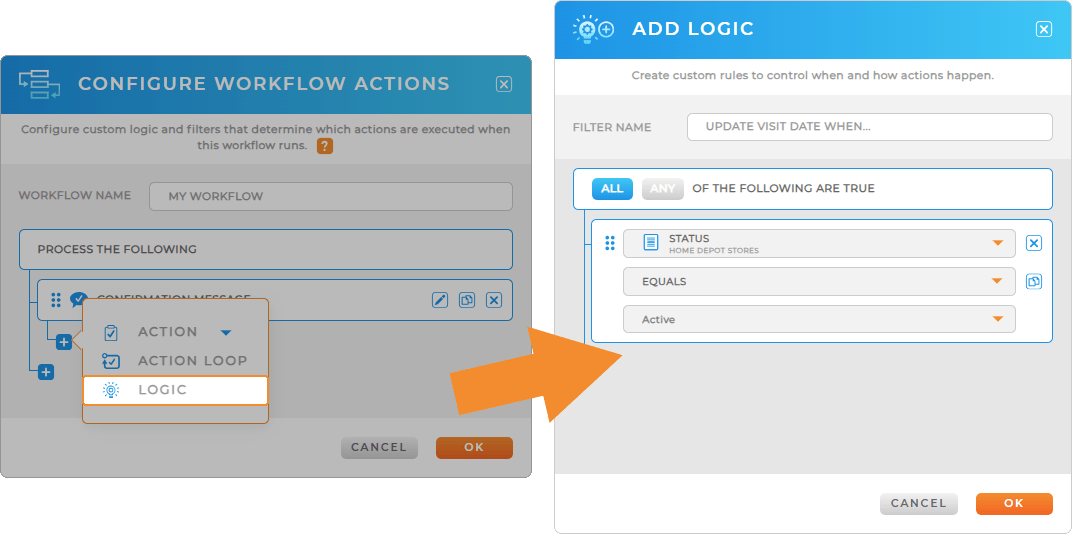
When and Where to Deploy AI Driven Insights in Your SMB
It’s tempting to think you need to “go big” with AI, but the most successful SMBs start small. Begin with a clear business question: Where are we losing revenue? Which reps are overbooked? Which customers are most profitable? Then deploy AI to answer it. Over time, those small wins add up to major growth.
AI works best in areas where your team is already collecting data—sales, customer support, marketing, logistics. The goal isn’t to replace human intuition but to sharpen it. With AI driven insights for business, your gut instinct gets backup from real-time analytics and predictive modeling.
AI-driven insights are data-backed takeaways generated by artificial intelligence tools. They matter because they turn raw data into clear, actionable guidance—helping SMBs make faster, smarter business decisions based on patterns and trends that humans might miss.
No. Many modern AI tools are built for non-technical users. Platforms like Mapline or Power BI offer intuitive dashboards and natural-language interfaces that help business leaders make sense of their data without deep technical expertise.
AI can identify customer behavior trends, optimize sales territories, forecast demand, reduce churn, and improve marketing effectiveness. By automating analysis and offering recommendations, AI frees up time and improves decision quality across departments.
Not at all. In fact, SMBs often benefit the most from AI because they have leaner teams and tighter margins. AI helps smaller teams do more with less—making it an ideal tool for scaling efficiently.
Start with a specific business question or problem, then use an AI tool to explore the answer. Look for platforms that integrate with your existing systems and offer a user-friendly interface. Starting small builds confidence and creates momentum for wider adoption.
Yes. Most modern AI analytics platforms integrate with CRMs, spreadsheets, and other data systems. That means you can begin leveraging AI without changing how your team works—just supercharging the insights they already rely on.









